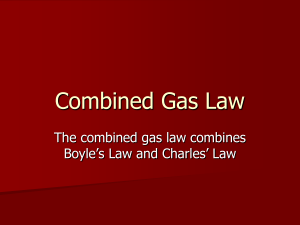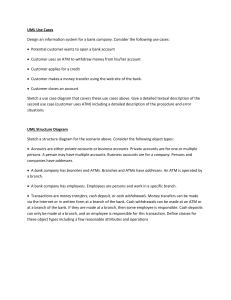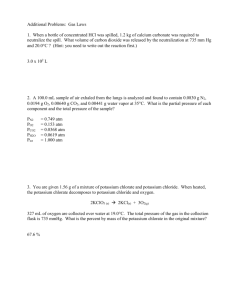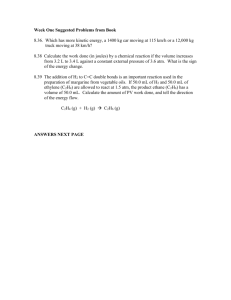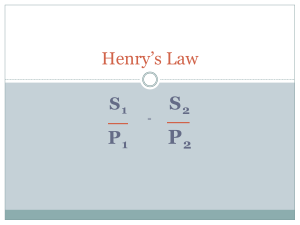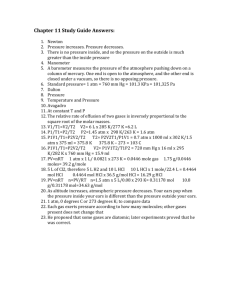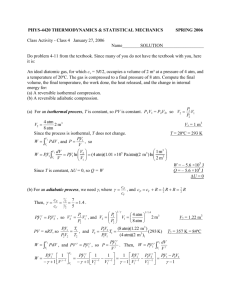AP Physics - Problem Solving
advertisement
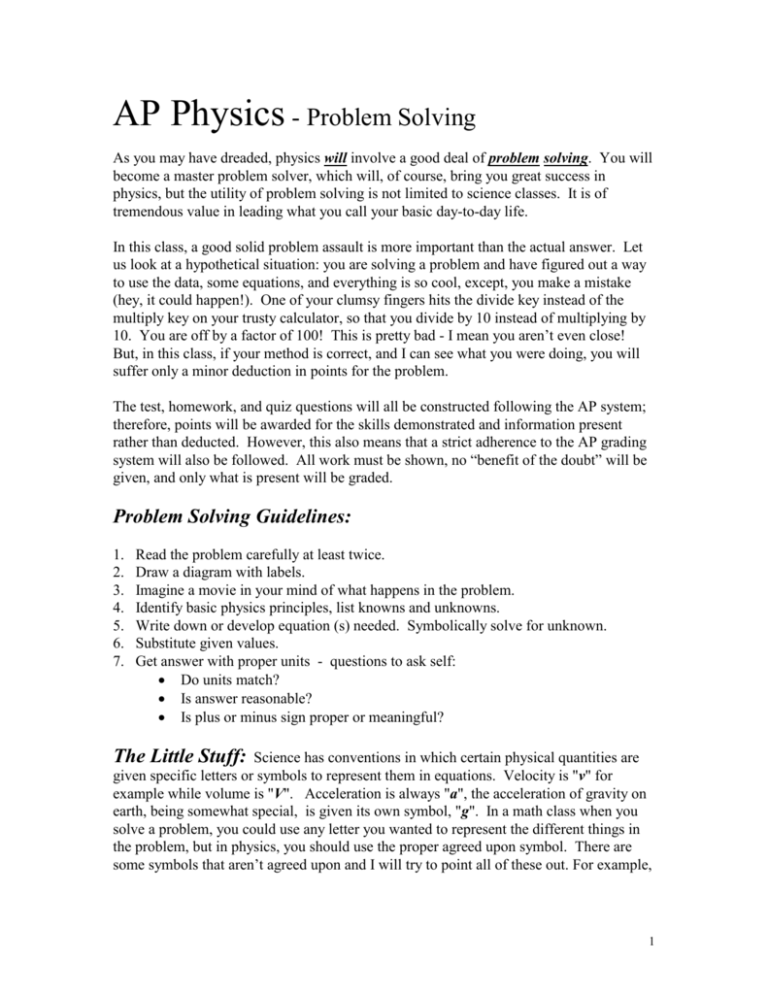
AP Physics - Problem Solving As you may have dreaded, physics will involve a good deal of problem solving. You will become a master problem solver, which will, of course, bring you great success in physics, but the utility of problem solving is not limited to science classes. It is of tremendous value in leading what you call your basic day-to-day life. In this class, a good solid problem assault is more important than the actual answer. Let us look at a hypothetical situation: you are solving a problem and have figured out a way to use the data, some equations, and everything is so cool, except, you make a mistake (hey, it could happen!). One of your clumsy fingers hits the divide key instead of the multiply key on your trusty calculator, so that you divide by 10 instead of multiplying by 10. You are off by a factor of 100! This is pretty bad - I mean you aren’t even close! But, in this class, if your method is correct, and I can see what you were doing, you will suffer only a minor deduction in points for the problem. The test, homework, and quiz questions will all be constructed following the AP system; therefore, points will be awarded for the skills demonstrated and information present rather than deducted. However, this also means that a strict adherence to the AP grading system will also be followed. All work must be shown, no “benefit of the doubt” will be given, and only what is present will be graded. Problem Solving Guidelines: 1. 2. 3. 4. 5. 6. 7. Read the problem carefully at least twice. Draw a diagram with labels. Imagine a movie in your mind of what happens in the problem. Identify basic physics principles, list knowns and unknowns. Write down or develop equation (s) needed. Symbolically solve for unknown. Substitute given values. Get answer with proper units - questions to ask self: Do units match? Is answer reasonable? Is plus or minus sign proper or meaningful? The Little Stuff: Science has conventions in which certain physical quantities are given specific letters or symbols to represent them in equations. Velocity is "v" for example while volume is "V". Acceleration is always "a", the acceleration of gravity on earth, being somewhat special, is given its own symbol, "g". In a math class when you solve a problem, you could use any letter you wanted to represent the different things in the problem, but in physics, you should use the proper agreed upon symbol. There are some symbols that aren’t agreed upon and I will try to point all of these out. For example, 1 many sources use “d” for distance, the lovely AP pholks use “x”, sometimes “y”, sometimes “s”, and occasionally an “r”. What a world. You must show your work on all labs, tests, homework assignments… in short, on everything. On a test, there will be an automatic 2 point deduction for failure to have proper units. 2 points will be deducted for improper significant figures. 2 points will be deducted for not using dimensional analysis. 2 points for not canceling units. These points could add up! It is very frustrating to have done some work and gotten all the answers correct, but because the work was not shown properly, the assigned grade is a "C" (or worse). Don't let this happen to you! For each problem you solve, you must: 1. Write down the formulas that you will use. 2. Make a list of the knowns, unknowns, and constants appropriate to the problem. 3. Many problems have multiple parts – (a), (b), (c), & etc. Organize your work the same way the problem is problem set up. 4. Solve for the unknown (if necessary) using the terms in the formula. (This means manipulating the symbols in the equation.) 5. Plug in the known values into the solved equation. Include all units and show how they cancel (if they do). 6. Write down your answer - make sure it has the correct units! 7. Make sure your answer has the correct number of significant figures. 8. Draw a circle or square or something around the final answer. This will be the answer that I will look at. Every time that you write down a measurement (a number that represents some real physical thing) you should include the units, you will lose valuable points for “neked" numbers. Example: Here’s a simple chemistry problem. A gas occupies a volume of 2.50 L at a pressure of 1.25 atm. If the pressure is changed to 5.75 atm what is the new volume? 1. Write down the equation (this would be Boyle’s law): p1V1 p2V2 2. Write down the knowns and unknowns: V1 2.5 L P1 1.25 atm P2 5.75 atm V2 ? 3. Now you must solve the equation for V2, the new volume: 2 V2 p1V1 p2 note that no numbers have been used thus far. 3. Next, plug in the values for the data: (This is known as pluggin' and chuggin'.) V2 1.25 atm 2.50 L 5.75 atm 4. Write down the answer: V2 0.543 L (Don't forget to cancel the units!) 5. It needs to have the proper number of significant figures, but this has been taken care of, so make a circle around it or make a square around it or something: V2 0.543 L That's all there is to it. This is the way that the class is. This is the way you must solve problems. Things will not change. I do not want to hear any whining about this. Accept it, learn it, adopt it, and make use of it. Do not cry about it. In the world of AP Physics B there is no pity. I have become amazingly good at finding little errors. The odd unit that wasn’t cancelled, the failure to have a unit on some obscure number, the wrong number of significant figures, etc. There is no appeal from any of this, so learn how to solve the problems properly. Dear Doctor Science, Why can't you divide by zero? -- Kitty Evans, Des Moines, Iowa Dr. Science responds: I can and often do divide by zero, but only after I've made the necessary preparations. First of all, I fast for 48 hours, consuming during that time only mildly fluoridated water. Next I don my special Teflon division-by-zero suit. Then I put on my digitally recorded compact disc of Gregorian chants and begin with dividing very small numbers by other very small numbers. As the numbers get smaller, the sparks begin to fly. If all goes well, I take a deep breath and divide a very small number by zero. There's a flash of light, a muffled roar, and when I regain consciousness, the lab is filled with smoke and the scent of burning Mylar. So, you see, you can by divide by zero if you really want to. Chances are....you just don't want to badly enough. 3




